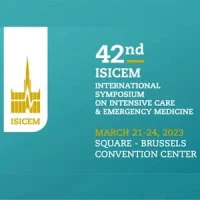Over the last few decades, the emergency physician workforce has undergone a dramatic transformation. There was a time when most physicians working in the emergency department had not completed residency training in emergency medicine. This began around 1970. Today, there are 273 emergency medicine residences accredited by the Accreditation Council for Graduation Medical Education (ACGME).
While emergency medical workers have increased their focus on accreditation and experience, there is very limited data on the numeric trends in residency graduate production, demand for emergency care, physician attrition, and integration of nurse practitioners and physician assistants in the provision of emergency care.
It is important to determine whether the current trends in emergency medicine will result in a deficit or surplus of residency-trained, board-certified emergency physicians. A surplus is likely to be a positive for rural and underserved communities, but at the same time, this surplus could have marketplace consequences such as decreased compensation for workers and difficulty finding good jobs.
In a new study, researchers aimed to determine the current and projected supply in 2030 of contributors to emergency care, including emergency residency-trained and board-certified physicians, other physicians, nurses, and physician assistants. The study also aimed to determine the current and projected demand for residency-trained, board-certified emergency physicians.
Researchers used existing data, assumptions based on past and potential future trends and sensitivity analysis to determine the final forecast. Analytical methods included estimates of the baseline workforce supply of physicians, nurses and physician assistants, estimates of future changes in the number of people entering and leaving the workforce, estimates of workforce productivity and estimates of demand for emergency care services. On the basis of the data, the change between the base year and 2030 and the difference in supply and demand in 2030 was estimated.
Based on the analysis, the researchers conclude that there will be a 2% annual graduate medical education growth, a 3% annual emergency physician attrition, 20% encounters seen by a nurse practitioner or physician assistant, and an 11% increase in emergency department visits compared to 2018. This could potentially translate into a surplus of 7,845 emergency physicians in 2030.
Overall, these findings suggest that there will be an oversupply of emergency physicians in 2030. This will mainly be due to an increasing supply and changing demand for emergency physicians. It is thus important to outline a collective approach to achieve a balanced workforce in emergency medicine.
Source: Annals of Emergency Medicine
Image Credit: iStock








